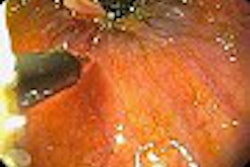NEW ORLEANS – Japanese nuclear cardiac specialists reported positive results with ECG-gated 13N ammonia PET for assessing global and regional left ventricular function in patients with myocardial infarction.
"ECG-gated ammonia PET may permit the simultaneous assessment of myocardial perfusion and left ventricular function," said Dr. Ichiro Matsunari, Ph.D., in a presentation Monday at the 2003 Society of Nuclear Medicine meeting. Matsunari and his co-authors are from Kanazawa Medical University in Uchinada. "We wanted to validate this promising technique against the current gold standard of MRI." The latter modality is valued for its high contrast, spatial, and temporal resolution in myocardial imaging.
In the study, 20 patients with a history of myocardial infarction were included. Their age range was 30-83 years. Out of the 20, 13 had had an anterior infarction, five inferior, and two lateral.
They underwent resting gated-PET imaging on a GE Medical Systems Advance Nx/I scanner and eight frames per cardiac cycle were acquired. On the same day, an MR scan was done on a 1.5-tesla GE Signa scanner using 16 frames per cardiac cycle. The gated-PET data was analyzed using QGS software from Digirad; the MR data using the MASS program from the University of Leiden in Germany.
The end diastolic volume (EDV), the end systolic volume (ESV) and the left ventricular ejection fraction (LVEF) were calculated from the gated-PET exam and compared with MR results. The left ventricular myocardium was divided into nine regions and regional wall thickening visually assessed by two readers with a 4-point scoring system, Matsunari explained.
There was a 77% agreement on the areas of wall thickening (138 out of 180 segments) between gated-PET and MRI (0.68 Kappa value), he reported. The LVEF measured by gated-PET significantly correlated with the MR results (R=0.85, p<0.01). Likewise, the EDV and ESV on gated-PET showed good correlation with MR measurements (R=0.92, p<0.01 for EDV; R=0.90, p<0.01 for ESV). None of the segments showed discordant wall thickening scores of two points or more, he added.
"Although MRI is considered the gold standard, sometimes it is difficult to see the end border of the left ventricular myocardium" Matsunari concluded. "A single study ECG-gated ammonia PET (exam) may be a useful option in clinical cardiac PET studies."
By Shalmali PalAuntMinnie.com staff writer
June 23, 2003
Copyright © 2003 AuntMinnie.com



















